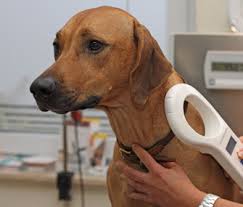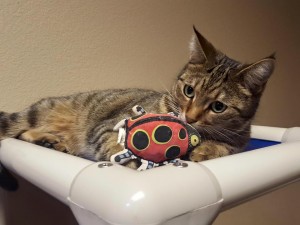Beat the Heat: Hot Weather Safety Tips for Your Pets
The summer can be hard on some of us humans as well as our pets. It is especially more difficult in Arizona, as the temperatures get into the triple digits where the heat can last far longer than in other parts of the country.
It is always best to keep your pets indoors, especially during excessive heat (or cold). There is no place that is safer for them than inside the home.
Remember never to leave your dog or cat in the car, especially during the summer months. “When it’s 72 degrees Fahrenheit outside, the temperature inside your car can heat up to 116 degrees Fahrenheit within an hour,” according to The Humane Society of The United States (HSUS) “What to Do If You See a Pet in a Parked Car.” The article provides important tips on what to do if you see a pet in a car. Make sure to keep the information handy and step in if you feel a life is in danger. 
Some other important tips to help keep your pets safe in summer from the HSUS’ “Keep Pets Safe in the Heat” include:
1. Keep track of humidity. Although Arizona tends to be on the dry side, it’s been getting more humid, so take heed. Pets cannot cool themselves in high humidity. Keep a thermometer handy for dogs whose temperature should not go over 104 degrees.
2. Keep exercise to a minimum. In Arizona when it’s triple-digits, the pavement is extra hot and too hot to walk your dog. If you must walk your dog, do it either very early in the morning or later in the evening. Bring water along for the both of you.
3. If your pet must be outside, supply fresh water and proper shade.
4. Always have enough water to keep your pets cool, even when your pet is inside.
5. Watch for signs of heatstroke, including excessive panting, fever, glazed eyes, vomiting and more. Older and overweight dogs are more prone.
6. Have a disaster plan in case of outage.
It’s best to be prepared for summer, and now is the time to start. Also, don’t forget the sunscreen, for you and Fido!
Microchipping Can Help Bring Your Pet Home If He Gets Lost
We hear it all the time. Someone accidentally leaves a door open and a beloved family dog, cat or rabbit escapes. Or the dog is out playing in the backyard and the landscaper forgets to shut the gate, and the dog gets out. When it happens, there’s no worse feeling than knowing your family pet is lost, out there alone and frightened and in possible danger.
backyard and the landscaper forgets to shut the gate, and the dog gets out. When it happens, there’s no worse feeling than knowing your family pet is lost, out there alone and frightened and in possible danger.
Although it is very important that all pets wear a collar and ID tags at all times, “Unfortunately, collars and ID tags are not foolproof and dogs and cats can still get lost. Collars can break or fall-off, leaving your beloved pet among the countless, unidentified lost strays at animal shelters,” according to “Microchipping 101: Why is it Important to Microchip My Pet?
Even though microchipping has become popular and has helped reunite many pets with their families, the technology should be used in addition to a collar and tags.
“Microchips are tiny transponders, about the size of a grain of rice, that can be implanted in your pet’s skin by many veterinarians and animal shelters; some shelters implant one in all pets they place,” according to the Humane Society of The United States (HSUS) article “High Tech: Identifying Lost Pets With Microchips.”
A special scanner is needed to read a microchip, which holds important identifying information so that owners can be reunited with their pets. Veterinarians and animal shelters typically have the scanners.
When you get your pet microchipped, make sure to fill out the paperwork and register the chip with the accompanying microchip company. If you move, make sure to update the information.
A microchip is an additional way to make sure your pet will be safe if he is lost. Your pet is family, so he can never have too much ID.
Make Sure To Have A Plan For Your Pets in Case of Emergencies
Even though here in Arizona, we don’t have tornadoes and hurricanes, emergencies and natural disasters come in other forms. From power outages during excessive heat to monsoons, it is important to ensure your pets are part of the bigger plan when disaster strikes. You definitely don’t want to scramble in the event of an emergency. You and your beloved pets could suffer uncecessarily.
Over the years, the importance of our pets has been heard and FEMA has listened. FEMA Deputy Administrator Rich Serino talks about preparing in case of an emergency in a short yet informative video. It doesn’t take a lot of effort to ensure our pets are safe, and it’s worth it.
To find out how to be prepared and for more information go to www.ready.gov.


 monitoring these shelters.” In addition, according to the website:
monitoring these shelters.” In addition, according to the website: 
Recent Comments